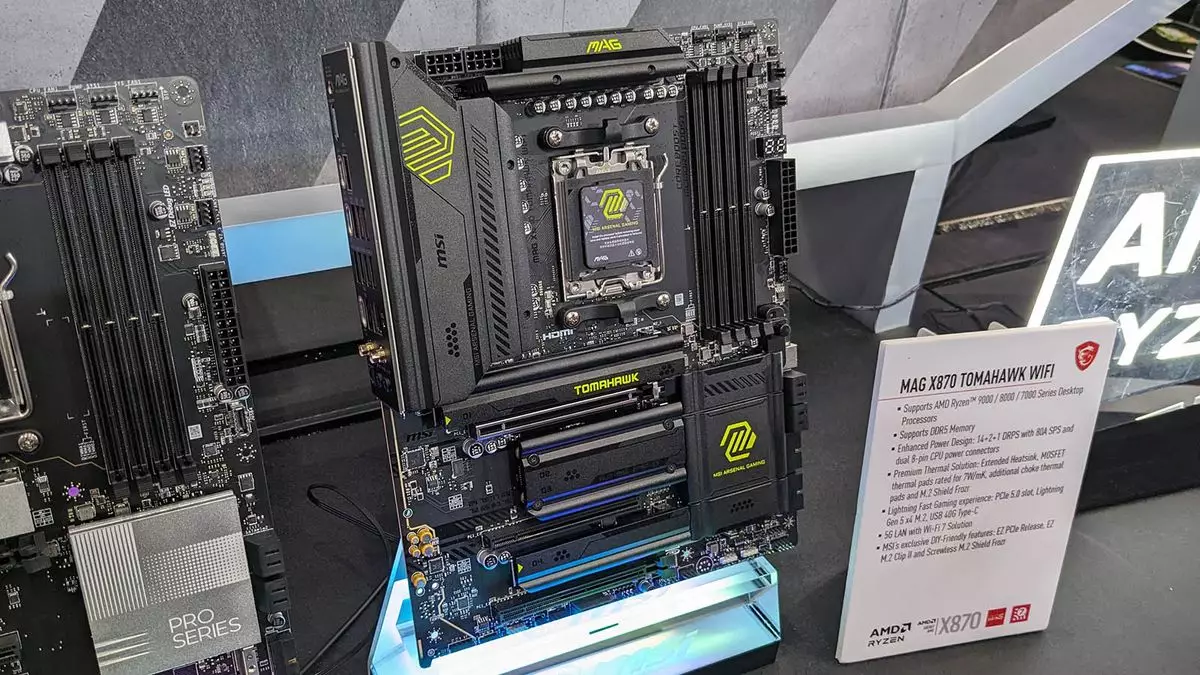During Gamescom 2024, MSI revealed its new X870 and X870E motherboard lineup, generating excitement among gaming enthusiasts and tech experts. One significant addition that caught the attention of visitors was the presence of an 8-pin PCIe power connector at the bottom of these motherboards, hinting at the evolving requirements of next-generation graphics cards from Nvidia and AMD.
Advanced Power Requirements
The inclusion of the 8-pin power connector signifies MSI’s preparedness for the power demands of upcoming high-end GPUs. Traditionally, such power connectors were reserved for elite or overclocking-centric motherboards. These connectors play a crucial role in supplying additional power to graphics cards that have high energy consumption rates. While a standard PCIe x16 slot can deliver 75W, integrating an extra 150W from an 8-pin connector expands the motherboard’s power capabilities to 225W, setting the stage for handling high-performance GPUs effectively.
Moreover, the potential for connecting up to 600W through a 12V-2×6 or 12VHPWR connector opens up possibilities for configurations involving multiple graphics cards or diversified workloads. For instance, pairing two less power-hungry GPUs for productivity tasks or AI operations becomes more viable with the added power redundancy provided by the 8-pin connector. In scenarios where dual GPUs draw 150W from two PCIe slots, the auxiliary power from the connector ensures stability and efficiency for the overall system.
The trend of escalating power consumption and thermal design power (TDP) ratings of flagship GPUs is evident in the current market. For instance, a high-end GPU like the RTX 4090 can consume up to 450W, with overclocked variants surpassing this threshold. Looking ahead, it is plausible to anticipate even higher TDPs for Nvidia’s next-generation GPUs, with a standard RTX 5090 potentially crossing the 500W mark. This trajectory underscores the necessity for advanced power delivery mechanisms on motherboards to cater to the evolving needs of cutting-edge graphics technology.
Industry Dynamics and Competition
While MSI has taken a proactive stance by incorporating 8-pin connectors in its mainstream motherboard offerings, other manufacturers have yet to follow suit across their product ranges. Enthusiast-grade boards like the Asus Crosshair X870E Hero have embraced this feature, prompting speculation on the future requirements of GPUs. As Intel’s Z890 boards approach their launch, the industry awaits to see if more motherboard manufacturers will adopt additional power connectors to align with the evolving demands of high-performance computing.
MSI’s unveiling of the X870 and X870E motherboards with 8-pin PCIe power connectors marks a significant shift in motherboard design to accommodate the increasing power needs of next-generation graphics cards. The industry-wide implications of this move suggest a continuous push towards enhanced power delivery solutions to enable seamless integration and optimal performance of cutting-edge GPUs in gaming, productivity, and AI applications. As technology advances, motherboard manufacturers must adapt to these evolving trends to remain competitive and address the growing demands of the PC hardware landscape.


Leave a Reply